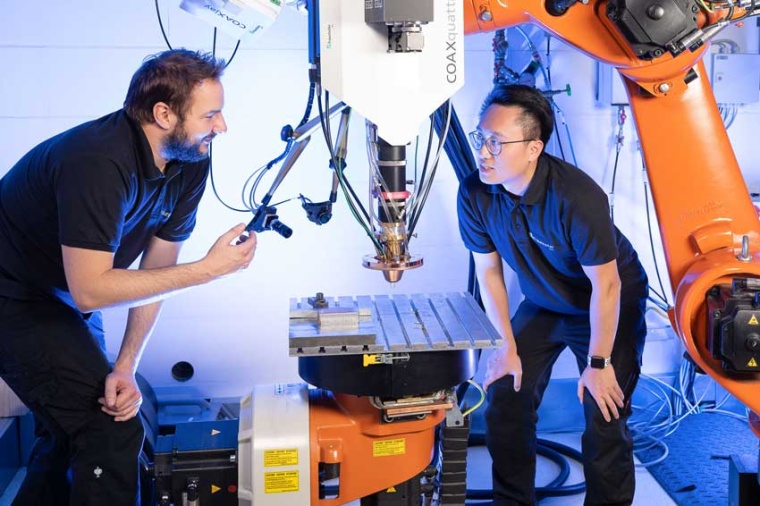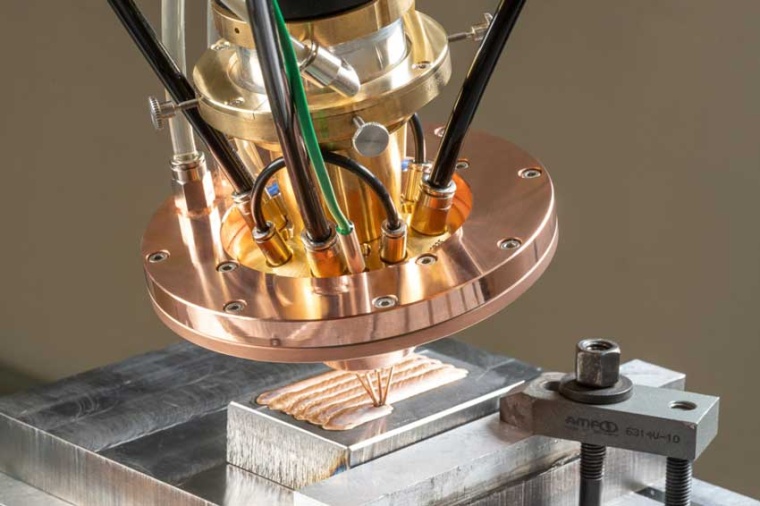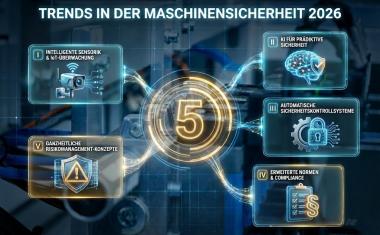Resilient laser cladding with high-power laser
Together with its project partner Laserline, the Fraunhofer Institute for Material and Beam Technology IWS has developed applications and specific processes for this laser class to industry readiness under the label “HICLAD”.
High-power diode lasers with outputs of ten or more kilowatts open new application scenarios for laser cladding. Particularly sustainable and resource-efficient coatings can be produced and applied, for example in automotive, machine construction and other industries. High feed rate, optimal speed, and large spot: Fraunhofer IWS has been developing the HICLAD process family for laser cladding for several years to enable customized solutions for highly productive coating processes using high power diode lasers. To this end, the researchers are, among other things, fine-tuning the parameters of energy distribution, speed and feeding rate in such a way that wide process windows become possible and fluctuations in the production process become tolerable.


The Dresden-based institute and the company Laserline have now achieved and surpassed deposition rates with 20-kilowatt diode lasers which were previously only feasible using plasma-transferred arc processes (PTA). The partners have also made considerable progress compared to existing laser-based solutions: Depending on the specific material and the nozzle selected, HICLAD achieves deposition rates of 18 kilograms per hour in industrial use. For an Inconel 625 nickel alloy, for example, productivity can be roughly tripled compared to a solution using a conventional 9 kW laser. The exact values depend on the specific application scenario. Compared to competing solutions with high-power lasers, the Fraunhofer IWS process is considered more robust.
In contrast to powder-based laser cladding, wire-based processes were previously limited to a maximum of six kilowatts. COAXquattro now enables laser power of up to 20 kW to be used in the combination of wire and powder. This can play a decisive role in multimaterial development, for example of novel alloys. Different materials can be fed as required through each of four wire and powder channels. In addition, the comparatively short processing times shrink expenditures for staff, shielding gases and other operating costs. In general, the system is designed for particularly efficient material utilization as well as very robust and flexible process control with high quality.
Company
Laserline Gesellschaft für Entwicklung und Vertrieb von Diodenlasern mbHFraunhofer Straße 5
56218 Mülheim-Kärlich
Germany
most read

Teledyne Vision Solutions: Camera manufacturer unifies machine vision portfolio
Teledyne combines the various machine vision technologies, including 1D, 2D and 3D cameras, under the umbrella of "Teledyne Vision Solutions".

Machine Safety 2026: The Five Most Important Trends for Eutomation Engineers
Digitalization and automation continue to drive mechanical engineering forward - and with them, the requirements for functional safety and cyber security are increasing. For automation engineers, this means that machine safety is becoming a holistic concept.

First access for external users to the QSolid quantum computer
The prototype of the QSolid quantum computer was successfully integrated into the JUNIQ infrastructure of the Jülich Supercomputing Center.

Successful conclusion of the IVSM Fall Meeting 2025 in Haikou, China
The 2025 Autumn International Vision Standards Meeting (IVSM) took place from November 3 to 7 in Haikou, Hainan, and attracted over 120 R&D engineers worldwide.

United Robotics Group restructures
The company focuses on the healthcare industry and innovation.






